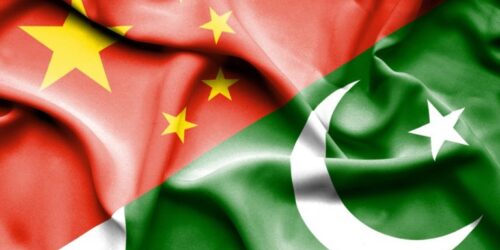In Gwadar, a developing port town in southwest Pakistan, Adam Qadir Baksh had been hoping for a major leap forward in his automobile spare parts business since 2015, but it has not happened in the absence of the vital Chinese tailwind once promised.
“There has been no benefit from the China-Pakistan Economic Corridor for local parts vendors and other suppliers,” Baksh said.
His unhappiness goes back six years to President Xi Jinping’s visit to Pakistan and the official launch of bilateral infrastructure development projects under the Belt and Road Initiative (BRI). Baksh said Pakistan has not benefited because for CPEC projects virtually everything is imported from China.
“China only procures sand and gravel locally for construction projects,” said Nasir Sohrabi, president of Gwadar’s Rural Community Development Council. “All other raw materials are imported from China leaving very little for local industry.”
CPEC is a $50 billion flagship BRI component that includes power plants, industrial clusters, and road and rail upgrades. About half the money pledged by China has already flowed in with investments and intergovernmental lending, pushing Pakistan’s economic growth above 5% in 2017 and 2018. But those who have yet to benefit from Chinese largesse are losing hope and becoming restive.
The main road leading to Gwadar Port has been blocked since Nov. 15 by thousands of locals in a sit-down protest demanding basic amenities, including water and power, as well as access to the sea for fishermen. “If our demands are not met, we will close down CPEC,” said Molana Hidayat, a local leader, during one bellicose address.
Pakistan has seen a decline in direct investment from China. According to the State Bank of Pakistan, the central bank, Chinese FDI in the quarter that ended in September was just $76.9 million compared to $154.9 million in the same quarter last year.
FDI in the fiscal year that ended in June was also markedly down. Excluding fiscal 2019, which included a general election, the inflow totaled $757 million — the least seen since 2015. In most years, Chinese FDI is 30-50% of the total, so the downward turn is a warning light for the economy.
The Chinese slowdown is also evident in Pakistan’s trade figures. United Nations’ data shows that China’s exports to Pakistan have been declining since a $15 billion peak in 2017. There is a clear downward trend in manufactured goods and materials; iron and steel — both crucial to infrastructure development — fell steadily by 40% overall between 2016 and 2020.
Touted as a “game changer” by Nawaz Sharif, the former prime minister, CPEC helped address Pakistan’s critical power generation shortfall. Mosharraf Zaidi, chief executive of Tabadlab, a think tank based in Islamabad, said CPEC has also had a profound impact on urban and highway transport, and helped in the construction of numerous roads connecting villages.
“No bilateral partner of Pakistan has been as central to the economic story of the country as China and the CPEC framework,” he told Nikkei Asia.
However, there are a number of projects that have stalled, including the Main Line-1 railway project — the costliest CPEC component at $6.8 billion to upgrade the Karachi-Peshawar rail link. China was meant to lend $6 billion, but unresolved differences between the two governments have lasted over a year, leaving the project untouched.
The discord is not new, but generally kept behind closed doors. China’s displeasure has, however, occasionally been leaked.
Around early 2019, Yao Jing, the Chinese ambassador, met in Quetta with officials from the Balochistan provincial government. Although it was never officially confirmed, he was extremely critical. “You people are not taking seriously the delays in the issuance of permission to a Chinese company to start working on a coal-fired power plant in Gwadar,” he said.
Such rifts between the two sides have become more evident, and led to reduced Chinese investment and exports to Pakistan.
Islamabad is alarmed by the costliness of Chinese projects. Tabish Gauhar, Pakistan’s special assistant to the prime minister on power and petroleum, stated in cabinet in August that a CPEC power project is 25% more expensive than the international norm.
“The Chinese ambassador has complained to me that you have destroyed CPEC, and that no work was done in the past three years,” Saleem Mandviwalla, chairman of Senate Standing Committee on Planning and Development, said at a September committee meeting after Chinese diplomats and officials defended the 135 Chinese companies operating in Pakistan.
“China has become more cautious in general and with regard to Pakistan,” James M. Dorsey, a senior fellow at the S. Rajaratnam School of International Studies in Singapore told Nikkei. “As many investors do, they look more at the return on investment than they did before.”
Dorsey believes the turning point for China came in early 2020 with the COVID-19 pandemic and continuing trade disputes. He believed another significant reason to be the growing number of foreign governments failing to keep up with repayments.
Other factors may be playing into the slowdown, power generation being a good example. With its new plants online, Pakistan’s installed capacity has reached almost 40,000 megawatts while peak electricity demand is 25,000 MW.
Terror attacks on Chinese interests have also had a chilling effect on economic cooperation. Most recently, nine Chinese nationals were killed by terrorists near the Dasu hydropower project in northwest Pakistan.





